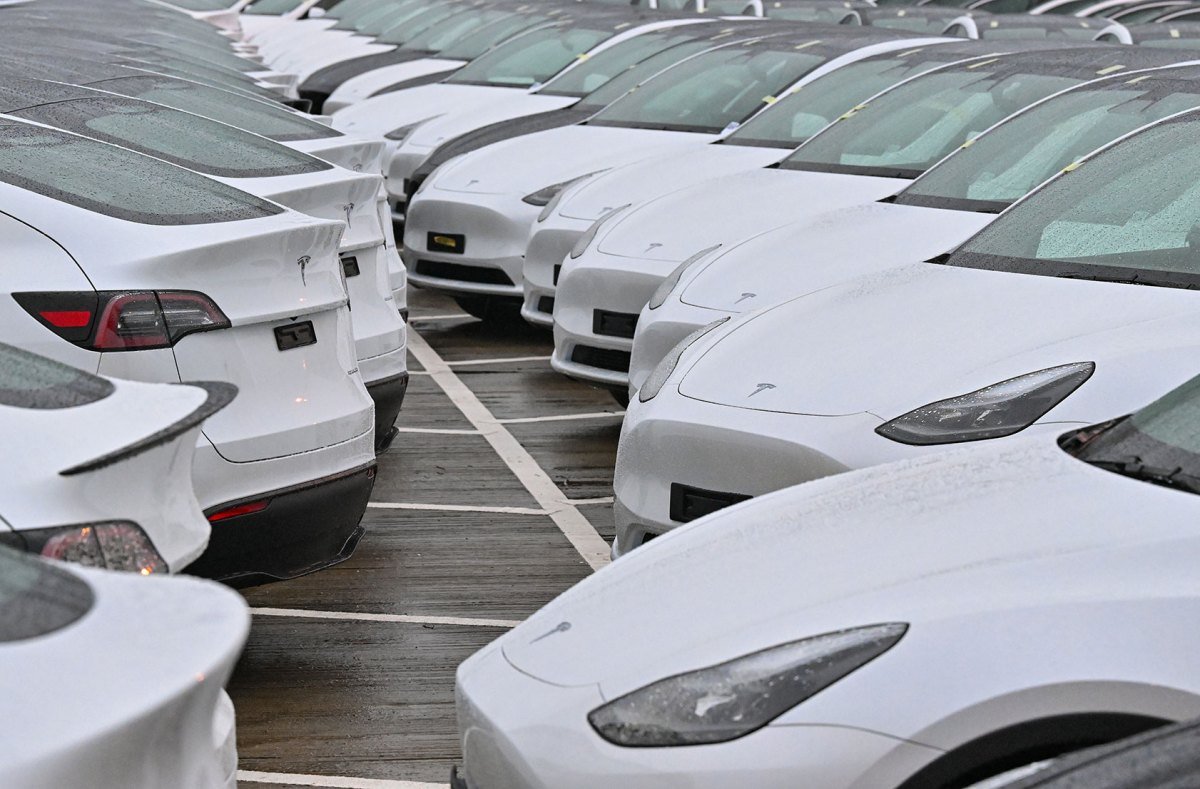Welcome back to TechCrunch Mobility — your central hub for news and insights on the future of transportation. Sign up here for free — just click TechCrunch Mobility!
Kirsten Korosec is still off on holiday, so you’ve got me once again! Today is the big Tesla shareholder vote. We’ll finally get to learn, among other things, whether investors think Elon Musk deserves his $56 billion pay package. And if they don’t, will Musk make good on his threats and leave Tesla so he can focus on xAI or SpaceX or just X?!
You’ve probably seen the breathless and thirsty pleas from Tesla board members, shareholders and Musk himself asking investors to vote in favor of the compensation package. Musk and his supporters have claimed that he is owed such astronomical wealth because he hit whatever agreed-upon targets they say he hit. But before the shareholder vote commences, we think it’s worth a second look at why Chancellor Kathaleen McCormick struck down the “re-ratification” of the package in January.
Her dominant theme? Musk holds so much sway over Tesla and its board of directors that there was no substantial negotiation when the company hammered out this deal with him in 2017-2018.
We’ll be watching and reporting, so check back in for updates.
A little bird

A little bird came to senior reporter Sean O’Kane and told him that Ford was poaching employees at EV startup Canoo. That led O’Kane down the rabbit hole of LinkedIn, where he learned Ford has been quite busy scooping up talent across competitors and tech giants like Rivian, Tesla, Formula 1 and Apple. The upshot? Ford is capitalizing on the recent chaos in the auto industry to build out its secretive low-cost EV team.
Got a tip for us? Email Kirsten Korosec at kirsten.korosec@techcrunch.com, Sean O’Kane at sean.okane@techcrunch.com or Rebecca Bellan at rebecca.bellan@techcrunch.com. Or check out these instructions to learn how to contact us via encrypted messaging apps or SecureDrop.
Deals!

General Motors is giving Cruise an $850 million lifeline as the robotaxi company slowly starts re-entering markets. The money is sort of a bridge to help Cruise fund its daily operations until it can “find the right long-term capital efficient strategy, including new partnerships and external funding.”
While this does seem like a large capital outlay, particularly since GM has already invested over $8 billion in Cruise, that $850 million is hundreds of millions lower than the automaker likely would have spent on Cruise this year. GM told investors at the end of last year that it would slash spending on Cruise following a series of safety incidents that culminated in Cruise grounding its entire fleet in November 2023.
Other deals that got my attention …
Descartes, a logistics company, has acquired BoxTop Technologies, a provider of shipment management solutions for small- to midsized logistics service providers for $13 million, the company told TechCrunch via email.
FLO, an EV charging network operator, has secured $136 million in long-term capital, mainly from a Series E round led by Export Development Canada. The funds will help FLO accelerate deployment of its charging network in the U.S. and Canada and advance the rollout of its new charging products, according to a statement from the startup.
Fly E-Bike, a NYC-based e-bike retailer focused on last-mile food delivery, went public on the Nasdaq last week at an opening price of $4.78 per share. The stock has since dipped nearly 20%.
General Motors’ board approved a new share buyback plan to repurchase up to $6 billion of outstanding common stock to create more upside for investors, according to a press release. The automaker also increased its stock dividend 33%, from $0.09 to $0.12 per share, in the first quarter.
Tern AI’s positioning system aims to provide a low-cost alternative to GPS. The startup just raised a $4.4 million seed round from Scout Ventures, Shadow Capital, Bravo Victor VC and Veteran Fund.
Belgian transport and logistics management startup Qargo has raised $14 million in a Series A led by Balderton Capital. Qargo’s goal is to help the logistics industry digitize to create efficiencies, reduce costs and bring down emissions.
Notable reads and other tidbits

Autonomous vehicles
Aside from scoring funding from GM, Cruise also announced that it’s back in Houston with a small fleet of vehicles. They will have a human safety driver behind the wheel as Cruise slowly and painstakingly revalidates its technology.
May Mobility will launch an autonomous shuttle service in Detroit for residents with disabilities or who are 65 and older. Starting June 20, May will deploy three AVs, two of which are wheelchair-accessible, to help participants get to healthcare facilities, shopping centers, work and social activities.
Waymo issued its second recall after one of its robotaxis in Phoenix drove into a telephone pole. The recall was an over-the-air update that should help the Waymo Driver avoid collisions with narrow, permanent objects.
Electric vehicles, charging & batteries
Aptera is the perfect example of how crowdfunding can go wrong. The startup raised over $100 million from retail investors who were reeled in by flashy social media campaigns. So far, Aptera has nothing to show for it.
The European Commission has concluded that the Chinese EV industry suffers from unfair subsidization that makes it a threat to EU EV producers. So it’s slapping more tariffs on Chinese EVs. For example, BYD would see a 17.4% duty, Geely’s would be 20%, and SAIC’s a whopping 38.1%.
Well, we certainly saw this coming. Fisker has issued its first recall for its troubled Ocean SUV due to problems with the warning lights. The recall comes as Fisker is on the brink of bankruptcy and has cut its workforce to the bone.
Rivian at first seemed like it was a little all over the place. But with the revamped version of its first two consumer vehicles (which you can read more about below!) that are built more efficiently and Rivian’s decision to set aside plans to build a factory in Georgia, the EV startup’s path to survival is becoming more clear.
Ride-hail
Revel launched an all-Tesla, all-employee ride-hail service in New York City in 2021. Now the company is ditching the employee model in favor of a gig worker model akin to competitors Lyft and Uber. In the process, Revel will have to lay off its 1,000 driver employees.
This week’s wheels

What is “This week’s wheels”? It’s a chance to learn about the different transportation products we’re testing, whether it’s an electric or hybrid car, an e-bike or even a ride in an autonomous vehicle.
Before Kirsten went on holiday, she gave Rivian’s revamped R1T and R1S a drive. Let’s see what she learned.
I recently got behind the wheel of the next-generation Rivian R1T and R1S. For those who want a deep dive, you can read my story about why this refresh matters and what new parts and features customers can expect.
For folks looking for the highlights, here are a few quick notes on some important changes.
The ride quality, specifically the road noise and suspension, are much improved in the next-gen R1 line. The ride quality in the first-generation R1S has been a source of complaints, so this improvement couldn’t not have come at a better time.
I also had a chance to test the advanced driver-assistance system. First-gen R1 vehicles also have ADAS, but this one is supported by lots of new sensors, compute and software. The automaker is calling it the “Rivian Autonomy Platform,” but I won’t be because I’m a stickler for what is and what is not autonomy. This is a hands-on system for now and the driver is always expected to be in control.
That being said, there is a lot of capability here. The perception stack includes 11 cameras, five radars, compute that is 10 times more powerful than what’s in the first-gen vehicles and what the company describes as “AI prediction technology.” And this system comes standard.
Rivian will also offer a premium version of the system, called Rivian Autonomy Platform+. I had a chance to test one feature in this premium version called “Lane Change on Command.” The feature, which is only available on divided highways, will move the vehicle into another lane if the driver hits the signal indicator. The feature worked, although I noticed that it took a moment for the vehicle to settle into the center of the lane.
Rivian says more automated driving features will roll out on this premium system in the months to come.





